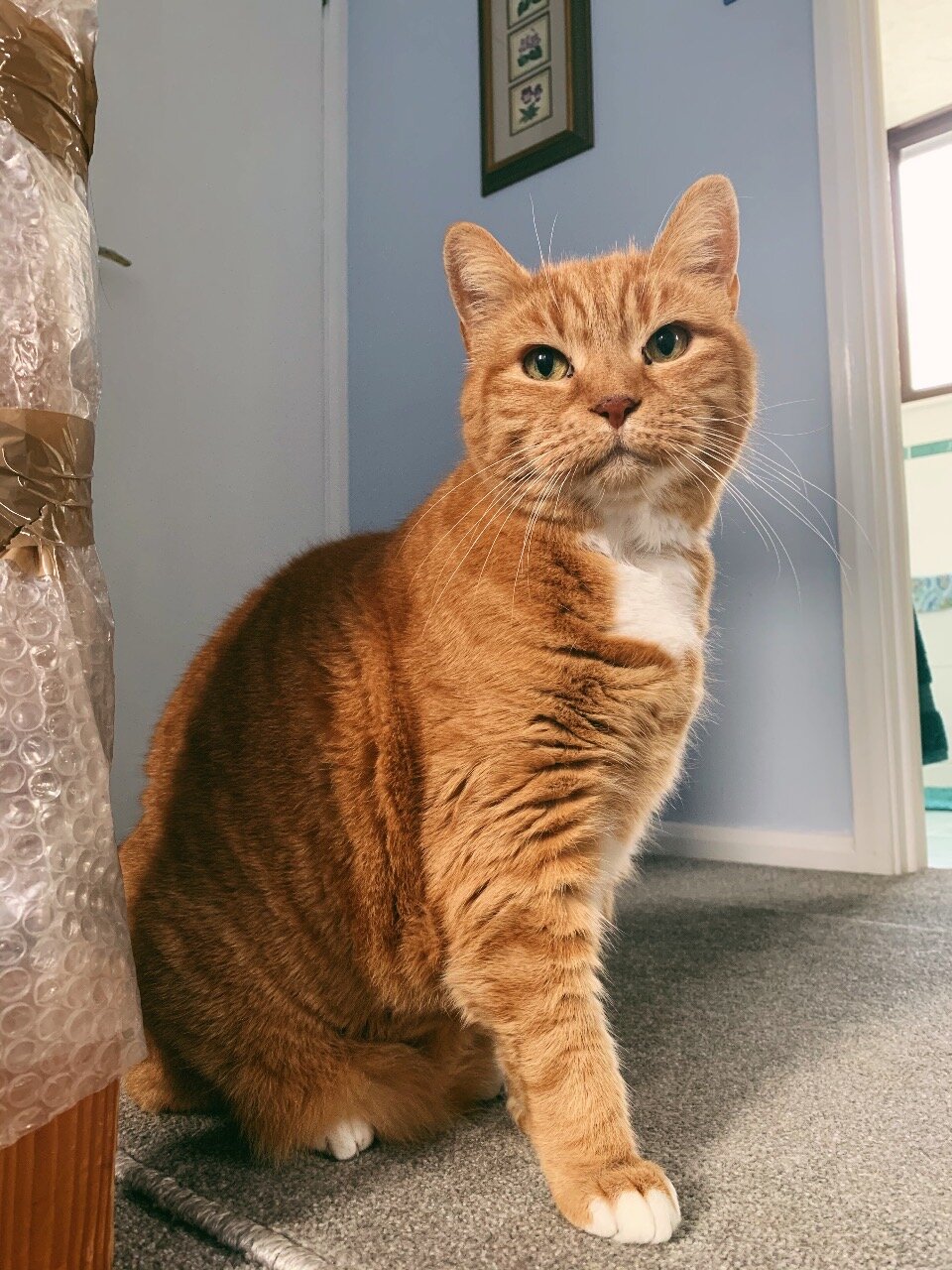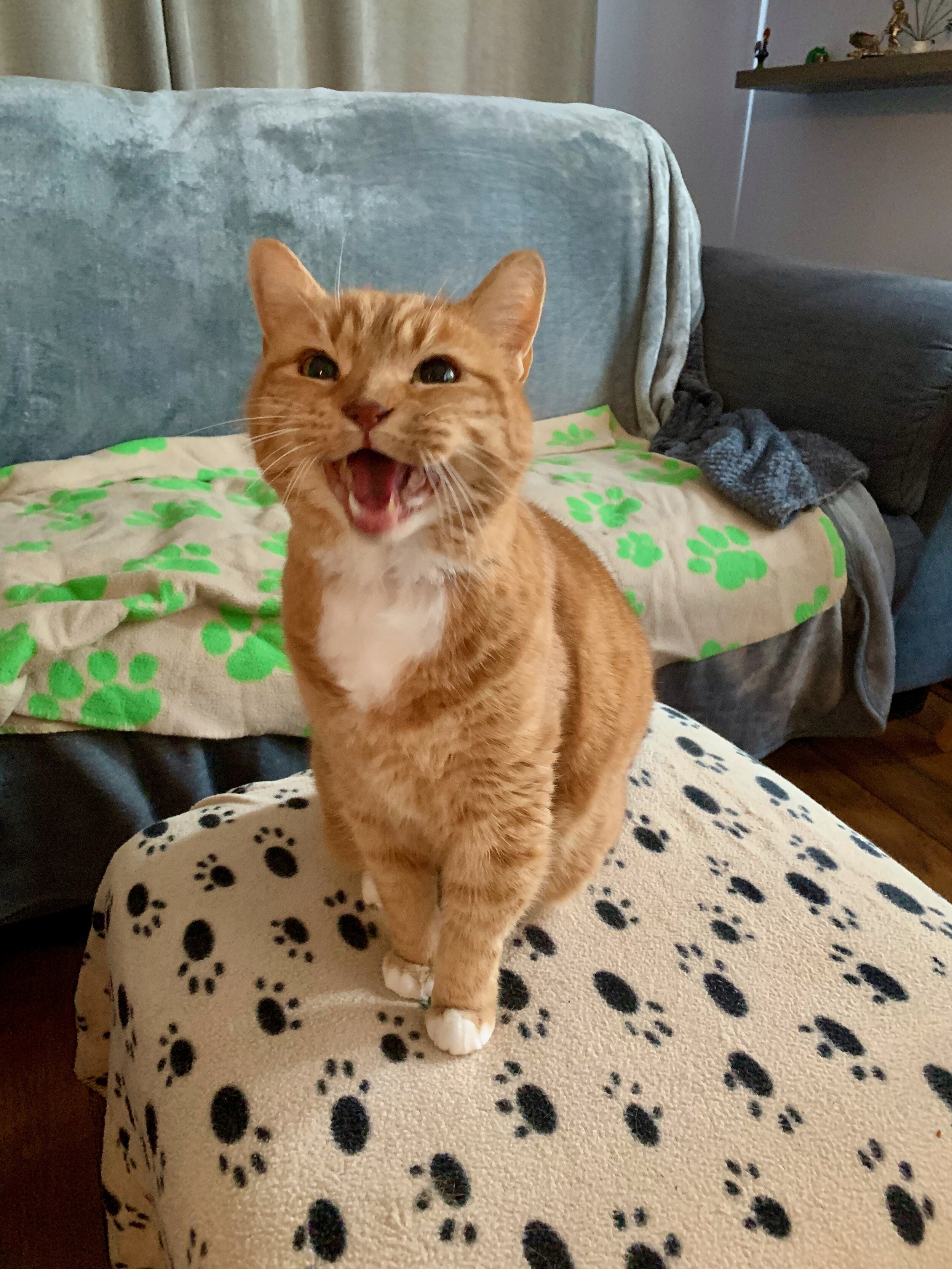How We Look After Your Nervous Or Poorly Pets
The Stamford Catsitter team specialise in caring for anxious, disabled or recently injured cats and dogs.
Are you concerned about leaving your fearful, disabled or poorly pet in the care of someone else? Perhaps you have a rescue animal that has experienced trauma, or has been subjected to physical abuse? Look no further than the love and care of The Stamford Catsitter team.
Both Katie and I have significant experience in dealing with very timid pets. We have also cared for plenty of animals with disabilities and recent injuries, as well as pets with behavioural issues.
Time is taken at the “Meet & Greet” to discuss in their personality and needs in detail. We will ask about their history, triggers and comforts, all of which will help us to piece together a care plan.
If your pet has suffered a recent injury or illness, this might mean new behavioural traits and potential anxieties. With our knowledge and expertise, we are well equipped to put your pet at ease during our visits. Let’s take a look at a couple of examples from the past year.
Client Case Study #1: Alan & Dave
British Shorthairs Alan and Dave both suffered injuries in August, a month in which their owner had two holidays booked (I actually spotted Dave’s inability to walk on my very first visit and transported him to the vets, where he spent the whole week. His prognosis was worsening by the day, so the fact I got him there quickly was very fortunate).
Dave (left) and Alan (right)
Taking Dave to the out of hours vets
Alan was very lonely without Dave. Furthermore, he had been hit by a car only a week before our visits, and was still adjusting to his injuries (loss of leg, eyesight loss, breathing difficulties). With his normal bustling family home left with just him in it, complete with an annoying cone around his neck, he desperately needed some TLC.
At my visits I quickly learnt what put Alan at ease and what triggered fear for him. He quite clearly had a fear of loud noises (particularly car door slamming and engines), but loved tickles under his cone, a comforting voice, dreamies and YouTube videos of birds & mice. I was also aware that since his injury he hadn’t been able to spend much time outdoors, as he had to be supervised at all times if he was to do so. So at each morning visit I would lay in the garden with him giving fuss and dreamies, where he would enjoy the sights and sounds he had missed out on. Then, in the evenings, she would lay with him in the low lit living room, watching YouTube with him as purred himself to sleep. We formed a very special bond, as we often do with our special needs pets.
Cuddling with Alan in the garden
Bonding with Alan
Our client had to go away the following week too, and so called upon our services once more. It was lovely to be visiting Alan and Dave this time (Dave had recently returned home from the vets) but this now meant two injured kitties, each with a very unique set of needs.
We took care and attention with both of them, keeping a close eye on their relative injuries and stitches. Alan had his cone taken off between our two bookings but unfortunately had begun biting at them in this time, so they were becoming very sore and bloody. We decided to purchase him a cone and utilise an antibacterial spray on his wound. After 24 hours this had healed up nicely.
It emerged Dave also loved YouTube and dreamies, and they appeared totally at ease with us by the end of our client’s second week away.
Client Case Study #2: Toby
When Toby’s owners approached us they were incredibly apprehensive about booking our services. Toby - a ginger rescue boy - had experienced physical abuse and neglect in the past. He found it very hard to trust new people, and it had taken him over a year to become comfortable with his owners. Unfortunately one of these owners had to spend a week in hospital, and his wife was going to stay nearby. They really didn’t want to leave him, but had no choice.
Toby had suffered abuse in his previous home
I visited Toby’s owners for a “Meet & Greet”, where I spent over an hour discussing Toby’s background and needs in depth. I was shown and made note of his hiding places, his exact feeding schedule and toileting habits. It was stressed to me that I almost certainly wouldn’t see him for the whole week, but could I please make sure that he was eating, drinking and using his tray.
Despite hiding for the first 24 hours, after 2 visits Toby allowed me to stroke him. After 3 visits, he came and sat near me. After 4 visits, he purred. You can probably guess the rest… his owner’s wife, who had intended on coming home to be with Toby, ended up extending her time nearby the hospital to be with her husband some more, she felt so comfortable that Toby was being well looked after.
Eating near me, but still cautious
Nuzzling me at my third visit
Shouting for his biscuits!
Client Case Study #3: Teddy
Teddy’s owner came to us in 2019 very concerned about finding a sitter for him. Teddy, a rescue dog, was displaying problematic behavioural traits around the home and out on walks. He was under the training and care of a qualified dog trainer, but his owners remained anxious about leaving him for longer periods of time.
The very handsome Teddy
We set up an initial “Meet & Greet”, where I spent a long while with the owner discussing his behaviours and past experiences. I was briefed as to his current training exercises and daily routine, and what his requirements would be at my visits. I spent plenty of time sat by Teddy at this meeting, allowing him to get used to my scent.
I then returned a couple of weeks later for a trial run “1 Hour Service” Pet Sitting. This went really well; I paid great attention to the training exercises explained to me and his triggers. Following this session, Teddy’s owner felt comfortable enough to book regular sessions for me to pop over. Sometimes it was when they went out for dinner, or on a day trip. I sent pictures and a full visit checklist via the app so they knew he was happy and relaxed. Teddy had really began to trust me in this time, and was making great progress with his training too.
Cuddle time!
All settled
Playtime
Client Case Study #4: Barney
When Barney’s owner approached us after recently moving to Stamford, she explained that she had two rescue cats who needed looking after whilst she was away, and that one of them - Barney - was very nervous. She didn’t hold out much hope that he would emerge for any of our visits, and just asked that we keep an eye on him and his food intake.
The gorgeous Barney
Barney liked to hide under the bed upstairs, squishing himself right into the back corner. Despite calling him, reaching out to him and waiting patiently for him to appear, he still hadn’t after the first couple of visits. I spent the time with the very friendly Rufus, his brother, hoping Barney would eventually show himself.
Using my knowledge and experience dealing with extremely nervous cats, I slowly placed a trail of dreamies under the bed at each visit. I also brought his breakfast and dinner up to him, all of which he tentatively ate from the comfort of his hiding place. Eventually, I pulled the bed out slightly so that I could reach to give him a reassuring stroke. He loved this, and started purring. As the visits went on, I would tickle him under the bed and give him his food and dreamies. After a few days he appeared, sitting by me and coming downstairs for food. As the week progressed he became fully relaxed and at ease in my presence, showing his personality and becoming very affectionate.
Hiding under the bed
Following my dreamie trail!
Out from under the bed!
Not only is this incredibly rewarding for us as pet sitters, but Barney’s owner received daily updates with pictures of him growing with confidence. This helped them to relax and enjoy their time away in the knowledge that Barney was happy and content.


















